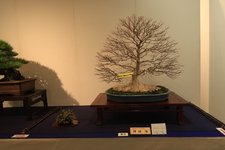Thanks for posting these. Amazing inspiration, but I just can’t get overly excited by the, and I’m going to say it, green helmet style conifers, particularly the pines. While I’m sure that they are much more expressive in person and are top of the pops in terms of quality, they just seem too flat and non emotive. I think number 2 is my favourite with special mentions for numbers 40 and 54.
it’s funny you say this because I think it was the third or fourth picture in particular where I realized I wasn’t feeling the tree, and was wondering why
My initial thought was that I’ve been looking at too much bonsai and suddenly found myself looking at it from an academic rather than pleasurable perspective, and I actually didn’t love it because it made me wonder if with more active bonsai creation I’d end up chasing an image of perfection that I’d be creating to look like other trees - and thus the individual trees become more rote, less important, one their own independent merits.
I’m hoping I can hang on to the appreciation of the imperfect and the wonder that bonsai brings as I continue my journey rather than trying to create countless versions of my own green helmet, if that makes sense.
I don’t know, maybe they’re
too good and, for example, the pines may be falling into a kind of uncanny valley for me where it’s harder to see the living tree beneath.
However, I don’t have that reaction to the deciduous trees, for instance, so maybe it’s just taste and species preference? I dunno.
I collect tobacco pipes too, and have a nice collection, and I remember when the higher end stuff went from “wow, maybe one day” to “I own this now”, and there’s a certain special sense of an air of rarity that gets lost eventually, I think. My biggest concern about this hobby is having it happen due to looking at too many trees, haha.
I’ve already found myself looking at some of my earlier trees that I’ve enjoyed, and have found myself thinking “this is awful, start over”, so in some ways I’m mentally eradicating my previous efforts as well as the enjoyment I had from my lesser trees. As I progress, I need to figure out how to avoid that, because I feel that as I learn independently it could stand to happen fairly regularly.
I dunno, just sitting here considering my belly button







